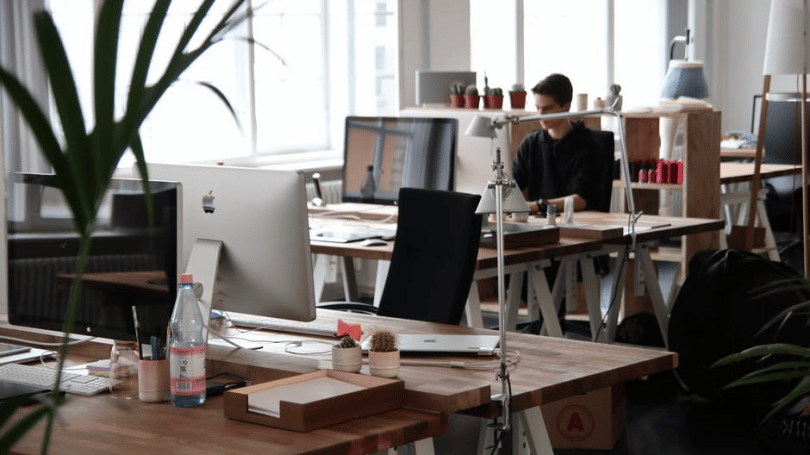In today’s ever-evolving business landscape, an ideal working environment isn’t merely a nice-to-have, it’s a critical factor contributing to an organization’s success. Encompassing more than just physical spaces, it also includes the culture, dynamics, and policies that guide daily operations. Striking the right balance can lead to improved productivity, creativity, and overall employee satisfaction.
The growing trend of modular workspaces signifies the pursuit of such an ideal working environment. This guide aims to delve into all these aspects, providing a comprehensive insight into creating a balanced, efficient, enjoyable working environment.
1. The Ideal Working Environment: A Multifaceted Approach
An ideal working environment is a combination of several aspects. These include physical and psychological comfort, collaboration and independence, flexibility, and a supportive and motivating culture.
Physical Comfort
Physical comfort plays a key role in maintaining employee productivity and well-being. This includes ensuring a clean, well-lit environment that is conducive to work. Natural light can boost mood and reduce eye strain. Ergonomic furniture can reduce physical stress and prevent health issues, while temperature control and noise management can prevent discomfort and distractions. The office space should also accommodate leisure and break areas where employees can relax and rejuvenate.
An example of this can be found in Apple’s circular spaceship campus, where the design fosters both collaboration and concentration. The office has open spaces for team meetings and secluded spaces for individual work, alongside ample natural light and temperature-controlled interiors.
Psychological Comfort
Psychological comfort involves creating an environment where employees feel safe, respected, and heard. This means implementing and enforcing strict policies against harassment and discrimination. It also involves fostering a culture of open communication, where employees feel comfortable expressing their ideas, concerns, and opinions without fear of retaliation or ridicule.
Providing employee assistance programs can also contribute to psychological comfort, as it ensures employees have access to mental health resources when they need them.
Balance between Collaboration and Independence
While teamwork is crucial for innovation and problem-solving, individual work is equally important for tasks that require deep concentration. An ideal working environment offers spaces for both. This could be a combination of open spaces that encourage spontaneous collaboration, meeting rooms for formal discussions, and quiet areas or pods for uninterrupted individual work.

Flexibility
Flexibility in terms of work hours and remote work options can greatly contribute to employee satisfaction and productivity. It allows employees to work at their most productive hours and provides them with the opportunity to balance work with personal obligations. A flexible environment also means equipping employees with the necessary technology and tools to work effectively from different locations.
Supportive and Motivating Culture
This involves creating an environment where employees feel valued and motivated. It includes transparent and empathetic leadership, opportunities for professional development, a fair and robust system for rewards and recognitions, and fostering a positive team spirit. Regular feedback and open communication are key to such a culture.
2. Office Culture
Office culture, also known as organizational culture or corporate culture, is a broad term that encapsulates the values, behaviors, and shared beliefs that contribute to the unique social and psychological environment of an organization. It defines the way people interact with each other, how work is performed, and what is considered important within the organization. Office culture significantly impacts all aspects of a company, from decision-making processes to communication styles, employee morale, productivity, and company reputation.
Key Components of Office Culture
- Values and Beliefs: The core values and beliefs of an organization play a significant role in shaping its culture. These may include a commitment to innovation, focus on customer satisfaction, emphasis on teamwork, or dedication to sustainability.
- Norms and Expectations: These include the unwritten rules about acceptable behavior within the organization. They can cover everything from communication styles and dress code to punctuality, work ethic, and attitudes towards work-life balance.
- Leadership Style: The style of leadership within an organization can greatly impact its culture. For example, a company with a top-down management style may have a more formal and hierarchical culture, whereas a company with a more democratic leadership style may have a more collaborative and inclusive culture.
- Work Environment and Practices: This involves the physical workspace and the policies and practices related to work schedules, meetings, vacation time, performance evaluations, and so on. A flexible work environment, for example, might contribute to a culture that values work-life balance.
- Relationships and Communication: The quality of relationships between team members, and the way information is shared within the organization, can also shape office culture. Open and transparent communication can foster trust and cooperation, while secretive or top-down communication may create an environment of suspicion and competition.
The Impact of Office Culture
Office culture influences employees’ behavior, motivation, and job satisfaction. A positive and inclusive office culture can help to attract and retain talent, boost morale and productivity, and enhance the organization’s image. On the other hand, a negative culture can lead to low morale, poor performance, high turnover, and damage to the company’s reputation.
For instance, Google has a well-known office culture that emphasizes innovation, employee autonomy, and a relaxed work environment. This culture is one of the factors that make Google an attractive place to work for many people. It has helped the company foster creativity, attract top talent, and maintain a strong position in the competitive tech industry.
To build a positive office culture, it is crucial to establish clear values, encourage open communication, promote collaboration, acknowledge and reward good performance, and foster an ideal working environment of respect and inclusivity. Moreover, these cultural aspects need to be regularly assessed and updated to ensure they remain relevant and effective in an ever-changing business environment.

3. Modular Workspaces
Modular workspaces refer to a flexible and adaptable approach to office design. The concept stems from the idea that the needs of an organization and its employees change over time, and thus, the workspace should be able to adapt to these changes. This flexibility is achieved through the use of various elements such as mobile furniture, removable walls, and configurable spaces that can be easily adjusted, moved around, or reconfigured to suit different needs.
Key Components of Modular Workspaces
- Adaptable Furniture: This may include desks on wheels, movable walls, and modular seating that can be easily rearranged or resized as required. For instance, desks can be moved together for collaborative work or separated for individual tasks.
- Configurable Spaces: These are spaces that can be easily transformed to serve multiple purposes. For example, a large room can be divided with movable partitions to create smaller meeting spaces or opened up to accommodate large team gatherings.
- Private Pods: Pods are small, enclosed spaces that can be used for private work or meetings. They provide a quiet place for concentrated work or confidential discussions.
- Collaborative Areas: Modular workspaces often feature open areas for spontaneous collaboration and informal meetings. These spaces might include comfortable seating, whiteboards for brainstorming, or even coffee bars to promote casual interactions.
Advantages of Modular Workspaces
- Flexibility: The most significant advantage is the ability to easily adapt the workspace as the company’s needs change. This can be particularly beneficial for growing companies that might need to frequently adjust their space requirements.
- Collaboration and Concentration: Modular workspaces can support both collaborative and independent work by allowing spaces to be configured according to the task at hand.
- Cost Efficiency: By allowing the workspace to be adapted over time, modular design can reduce the need for costly renovations or moving to a new office space.
- Employee Well-being: Providing employees with the ability to choose and adjust their work settings can contribute to their comfort, productivity, and overall job satisfaction.
One example of a modular workspace is the Lego Group’s Denmark office. Here, the workspace is designed to encourage interaction and collaboration. The layout includes movable screens and mobile desks, which can be rearranged as needed. There are also soft seating areas, which can be used for more informal meetings or relaxation during breaks. This kind of design allows the office space to be quickly and easily adapted to the ever-changing needs of the business, making it a more efficient and effective working environment.
Conclusion
The path to creating an ideal working environment is not a one-size-fits-all approach. It demands a careful blend of physical and psychological comfort, balancing collaboration and independence, flexibility, and fostering a supportive culture. Embracing modular workspace design can further empower organizations to adapt to changing needs and preferences.
As we move forward in the world of work, the focus must remain on cultivating an ideal working environment that inspires creativity, innovation, and well-being, fueling not only the growth of the organization but also enriching the lives of those who propel it.
